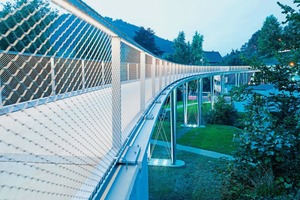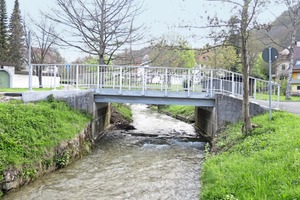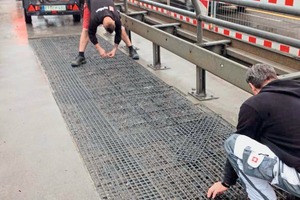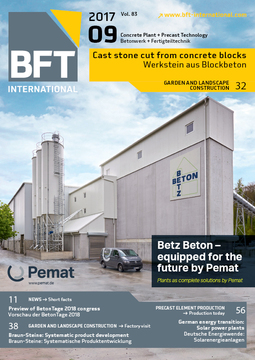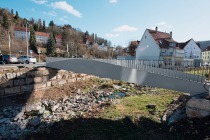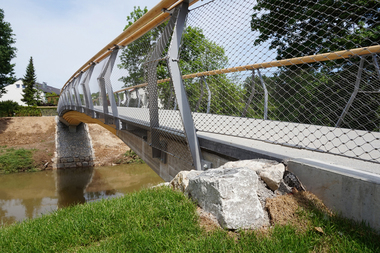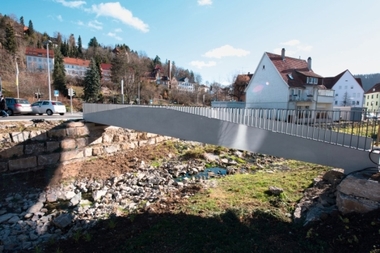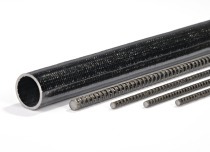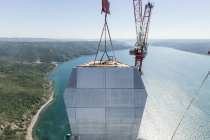Carbon concrete is becoming the go-to material for bridge construction and restoration
Textile reinforcements made of carbon are being used more and more in bridge construction, especially for items in precast concrete construction or for repair works. Reinforced concrete, which is prone to corrosion, will be replaced in the long term by the economically attractive new material in many areas. Carbon concrete is already establishing itself today in cycling and pedestrian bridge construction and is paving the way for greater tasks:
Its development is gradually advancing to be able to also produce carbon motorway bridges with carbon concrete in the foreseeable future, and to therefore bring an end to today’s usual expensive and time-consuming restoration measures. In Albstadt, Baden-Württemberg, Solidian engineers and developers have been working closely with industrial partners in concrete construction as specialists for non-metallic reinforcements for several years, with the common aim of making future bridge construction more cost-efficient, more durable and more low-maintenance.
General building approval for facades
Solidian reinforcements today already find various uses in concrete construction, particularly in the realisation of prefabricated parts such as modular construction, pedestrian bridges, sandwich facades, curtain walls or furniture. Meanwhile Solidian has now also received the first general building approval for the construction of facade sandwich panels, and therefore paved the way for industrial use. Solidian’s development team was also involved from the beginning in the development of solutions for construction engineering, to which two successfully built bridges now bear testament. The pedestrian bridge in Lautlingen, which, with its 100 m, is currently the longest textile-reinforced bridge in the world, was their first high-profile lighthouse project.
Modular yet individual constructions
The bridge built in the precast concrete plant features top-quality geometry, concrete composition and post-treatment. The monolithically produced bridge is transported in one piece and positioned onto the bridge bearings in the space of a few hours. There are no long traffic disruptions. Minimum maintenance costs also include the loss of sealing from the surfaces.
The modular bridges have been developed from the aspect of cost-efficiency, but they leave enough leeway for individual bridge constructions. The acceptance of carbon concrete is also significantly increasing in the replacement construction of existing building structures in bridge construction due to its clear advantages. Defective roadways of smaller road bridges up to 40 t and bridges for pedestrians and cyclists currently benefit from the short construction times and from a solution which promises a restoration-free period in the long term. Meanwhile, bridge caps have also been restored with carbon concrete.
Reinforcement production
Solidian works in close cooperation with plants for prefabricated parts, construction companies and planning offices, and therefore offers the complete technical planning of the reinforcement from measurement to evaluation up to the technical testing in the laboratory before it goes into production. As a manufacturer, Solidian hereby carries out all the production steps for in-house reinforcement with optimally designed machinery. If required, Solidian then also supports the entire construction process and oversees construction supervision.
Solidian is becoming an international supplier today, the Albstadt company has ultimately significantly shaped the development of textile-reinforced concrete from the first research approaches and results to the market and production stage up to industrially designed production of carbon and AR glass reinforcements, and has thus heralded the successful technological change in bridge construction and restoration.

